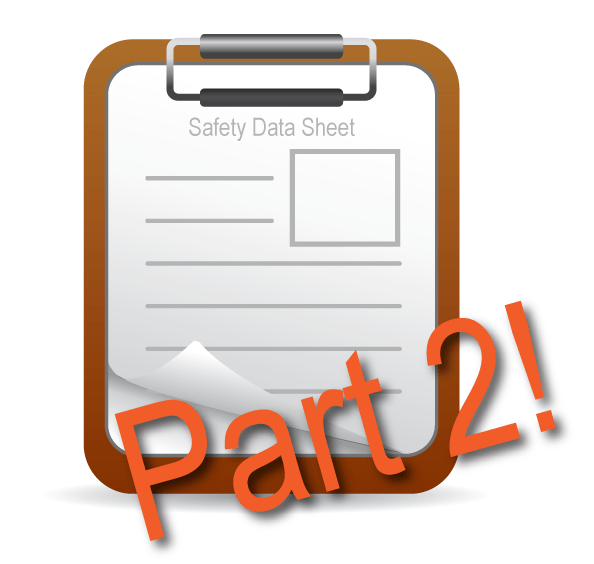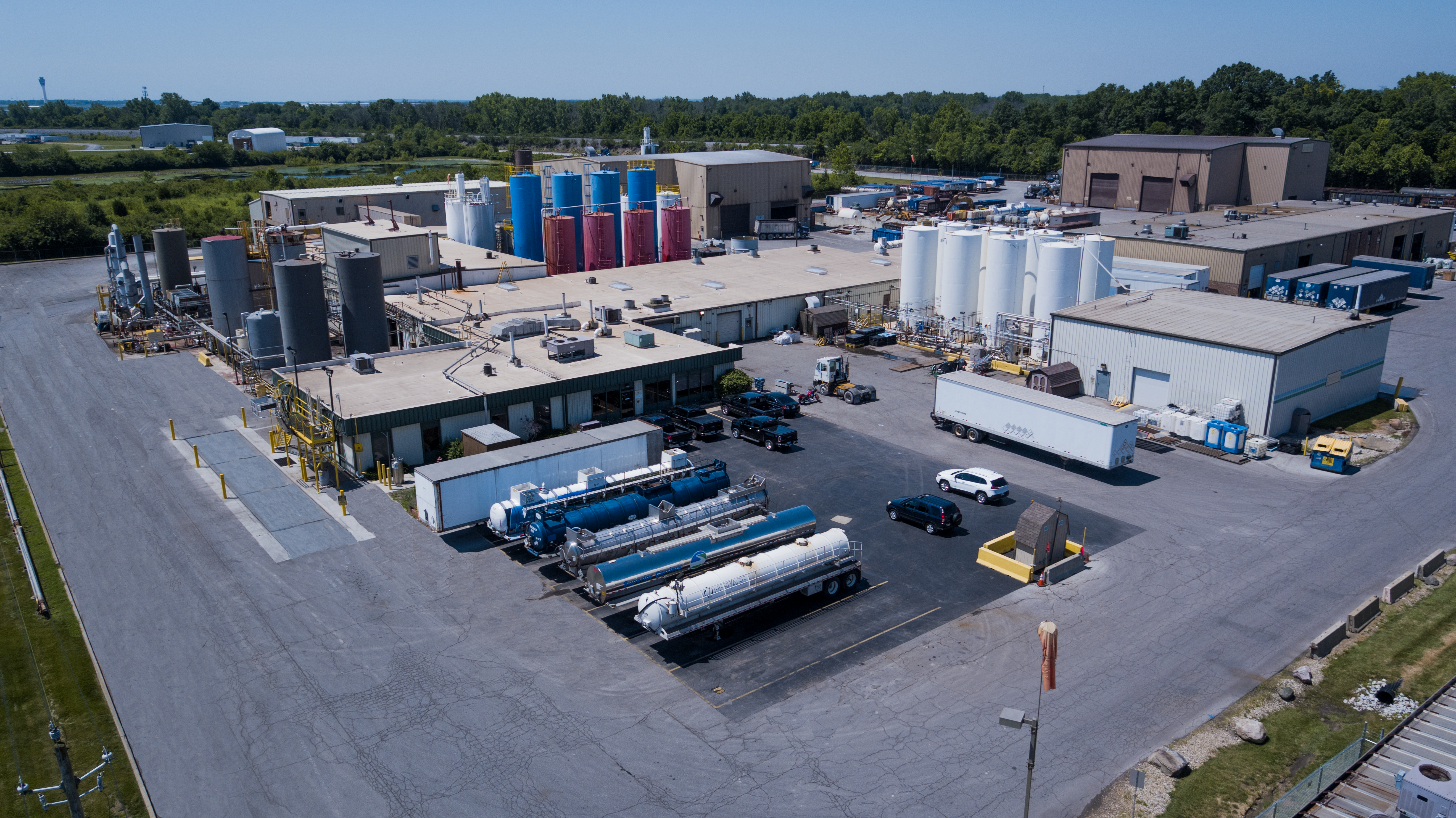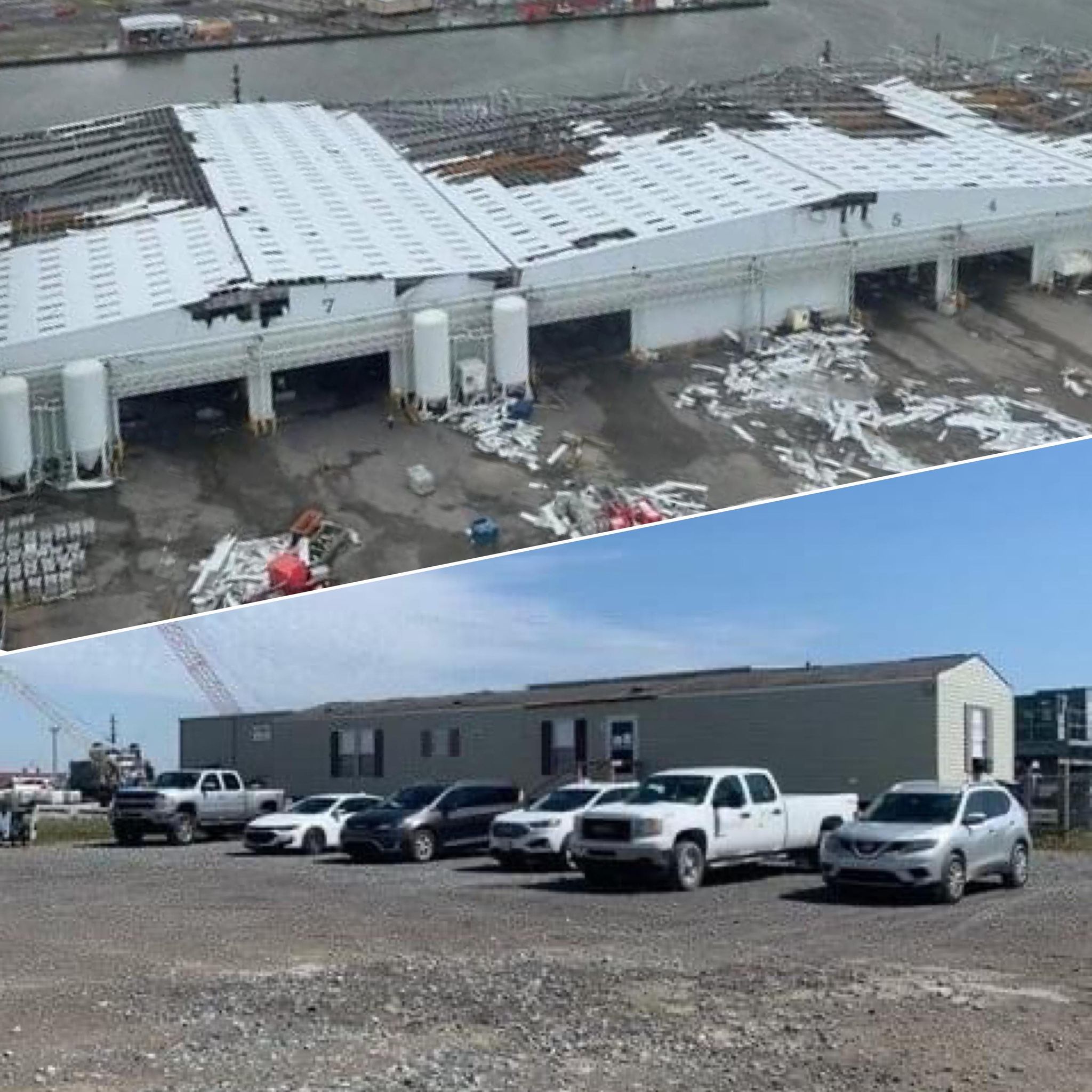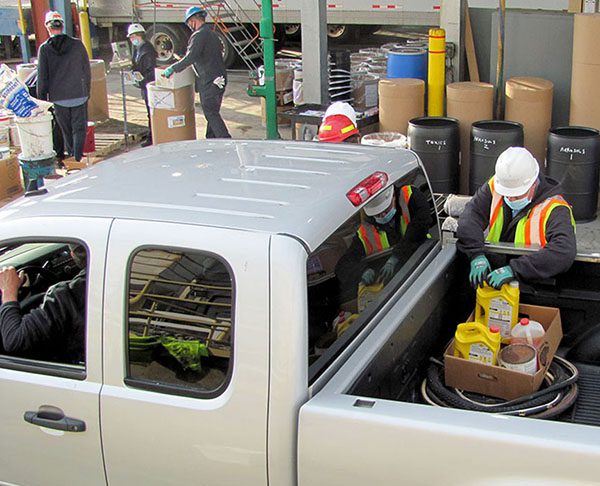
We wrote on Tuesday about the new regulations concerning OSHA Safety Data Sheets. To refresh, the new regulations require a 16 section format for Safety Data Sheets. This format is modeled after ANSI. The order and placement of each section is not allowed to be altered. We covered sections one through six last time; today we will cover seven through eleven.
7. Handling and Storage
The information required in section seven deals with the safe handling and storage of chemicals. This section needs to include guidelines for safe handling of chemicals including listing incompatible chemicals, minimizing the release of the chemical into the environment, and providing basic hygiene practices to be followed in chemical work areas.
8. Exposure Controls/Personal Protection
In section eight you need to include exposure limits (OSHA Permissible Exposure Limits (PELs), American Conference of Governmental Industrial Hygienists (ACGIH) Threshold Limit Values (TLVs), and any other exposure limit used or recommended), engineering controls, and personal protective measures to be taken to minimize worker exposure.
9. Physical and Chemical Properties
Section nine is where physical and chemical properties associated with the substance or mixture need to be denoted. At a minimum, the information listed in this section needs to include:
- Appearance (physical state, color, etc.);
- Upper/lower flammability or explosive limits;
- Odor;
- Vapor pressure;
- Odor threshold;
- Vapor density;
- pH;
- Relative density;
- Melting point/freezing point;
- Solubility(ies);
- Initial boiling point and boiling range;
- Flash point;
- Evaporation rate;
- Flammability (solid, gas);
- Upper/lower flammability or explosive limits;
- Vapor pressure;
- Vapor density;
- Relative density;
- Solubility(ies);
- Partition coefficient: n-octanol/water;
- Auto-ignition temperature;
- Decomposition temperature; and
- Viscosity.
That said, not every item on the list above will be relevant to or available for every substance or mixture. If that is the case manufacturers must make a note of the fact for that chemical property.
10. Stability and Reactivity
This section lists out the information concerning reactivity hazards and chemical stability information and is broken into three parts, reactivity, chemical stability, and other. These three parts require different information.
Reactivity: The reactivity part must include a description of specific test data for the chemical or chemicals. This data can be for a class or family of the chemical if such data adequately represent the anticipated hazard of the chemical(s).
Chemical stability: This section needs to indicate whether or not the chemical is stable or unstable under normal ambient temperature and conditions when stored or transferred. Additionally, it needs to include a description of any necessary stabilizers needed to maintain chemical stability and an indication of any potential safety issues that could occur it the product were to change in physical appearance.
Other: The “other” section needs to include information on the possibility of hazardous reactions, including a statement as to whether the chemical will react or polymerize, which could release excess pressure or heat, or create other hazardous conditions. Also, a description of the conditions under which hazardous reactions may occur must be included. This section is also where conditions that should be avoided, a list of incompatible materials, and a list of any known or anticipated hazardous decomposition products that could be produced because of use, storage, or heating need to be listed.
11. Toxicological Information
This section must include information that identifies toxicological and health effects or indicate that such data is not available. This information must include likely routs of exposure, description of all effects from short or long term exposure, numerical measures of toxicity, a description of the symptoms associated with exposure, and indication of whether the chemical is listed in the National Toxicology Program (NTP) Report on Carcinogens (latest edition) or has been found to be a potential carcinogen in the International Agency for Research on Cancer (IARC) Monographs (latest editions) or found to be a potential carcinogen by OSHA.
Keep checking the blog for part three (the final post), coming soon. For complete information visit the OSHA website here.
More News From Heritage
-
Published Articles 8/2/22
How Safety, Maintenance, and Reliability Are Intertwined
VP of Health and Safety Jim Mangas discusses the importance of plant safety, maintenance, and reliability (featured in BIC Magazine July/Aug '22)
-
Blogs 7/28/22
Spotlighting Our Environmental Interns
Highlighting some of the wonderful interns we have at Heritage this year!
-
Blogs 7/11/22
Turning Hazardous Waste into an Alternative Fuel
In this blog we walk you through the process of fuel blending, where we can turn hazardous waste materials into a viable alternative fuel source.
-
Community News 6/15/22
2022 Habitat for Humanity Build
Our 12th annual Habitat for Humanity Build
-
Blogs 4/13/22
After Hurricane Ida, Our Port Fourchon Office Rebuilds
On August 28th, 2021, the Louisiana coast was battered by Hurricane Ida. This included our Port Fourchon Service Center, where the devastating hurrica
-
Community News 4/7/22
Heritage readies for Earth Day HHW collection in East Liverpool
Heritage Thermal Services is pleased to announce that its collection of household hazardous wastes for the East Liverpool area returns for 2022.
-
Published Articles 4/2/22
The Impact of Changing Conditions
VP of Health and Safety Jim Mangas discusses preparedness for unexpected conditions during a project. (featured in BIC Magazine March/April '22)
-
Blogs 3/11/22
International Women’s Week Spotlight – Rachel McGrogan
Rachel McGrogan speaks about her time as a Lab Chemist at Heritage.








